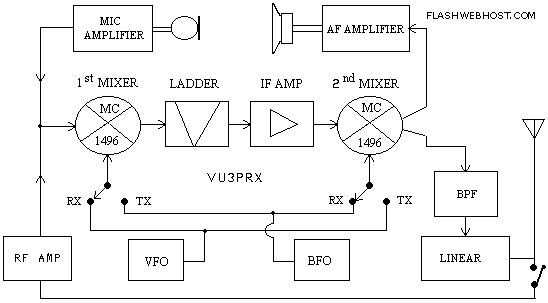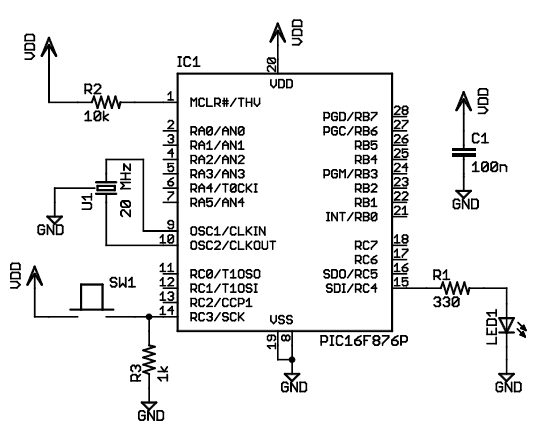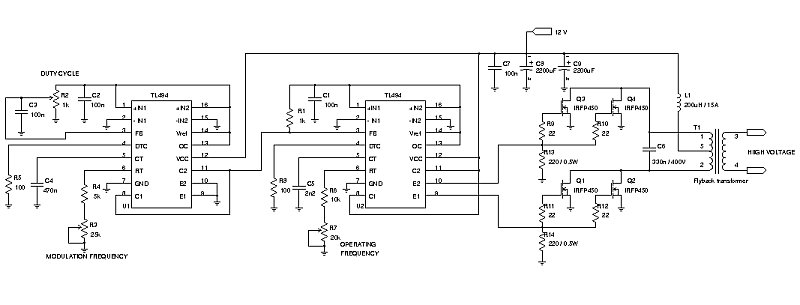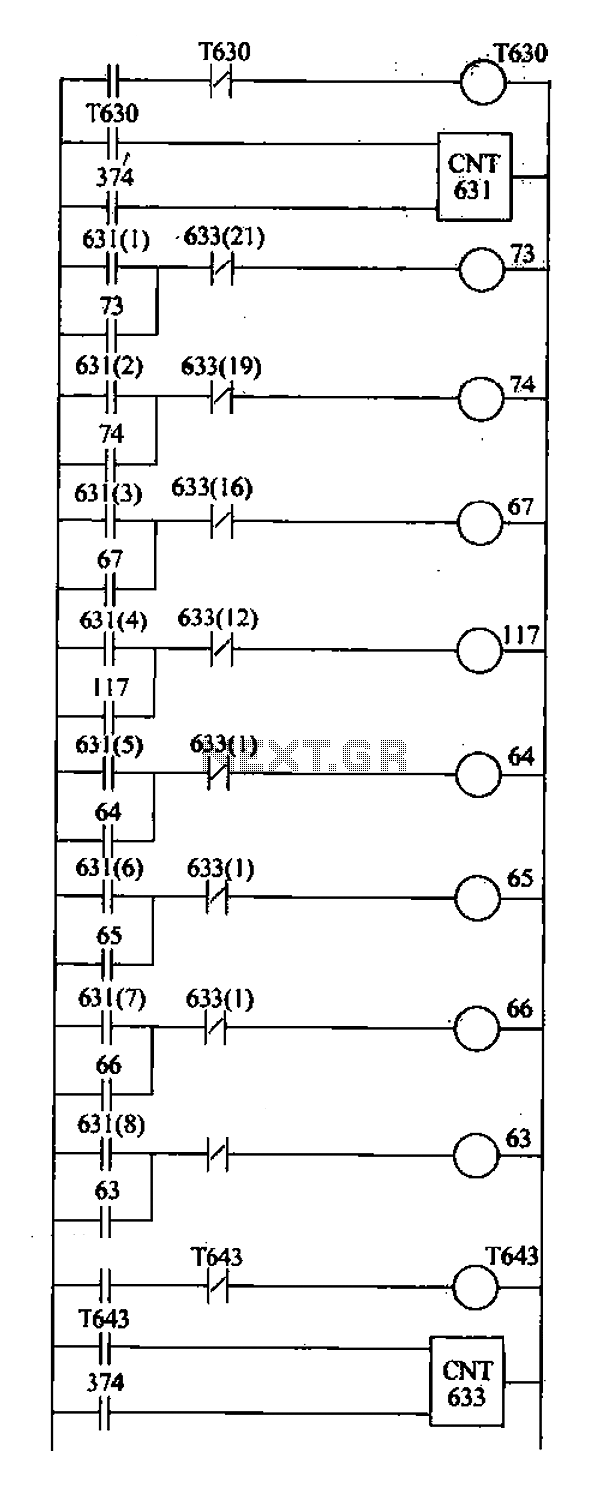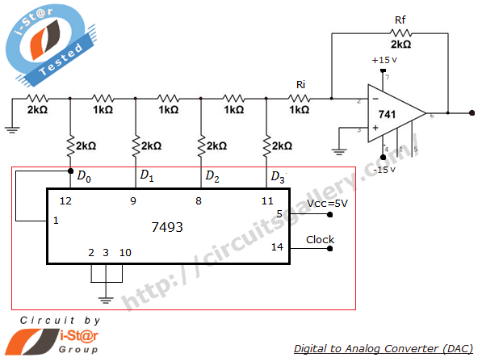
Jacobs Ladder
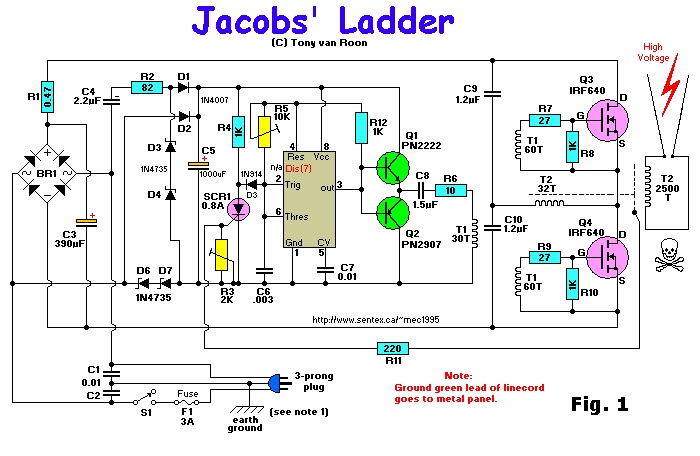
Construct this engaging Jacob's Ladder to observe electric arcs ascending the ladder and dissipating into the atmosphere. It operates using a sophisticated 12,000-volt power supply. The author, Robert Iannini, notes that electric arcs have long captivated and intimidated people, manifesting as lightning, Tesla coil discharges, and sharp sparks felt when touching a doorknob on a cold, dry winter day. This Jacob's Ladder project transforms electric arcs into a striking yet safe conversation starter. By building this project, one will learn how a basic power supply connected to the 120-volt AC line can generate 12,000 volts. Besides powering the Jacob's Ladder, the supply can also be used for plasma displays and has even been utilized to power a light-duty bench-type spot welder. The term Jacob's Ladder originates from a biblical account of Jacob's dream of a ladder stretching from Earth to heaven. Jacob, the son of Isaac, was the progenitor of the twelve tribes of Israel. In nautical terms, a Jacob's Ladder refers to a long rope ladder deployed over the side of a ship for the harbor pilot's ascent.
The power supply for this project creates electric arcs between two diverging stainless steel strips housed in a protective enclosure. These 16-inch strips are mounted on insulating Teflon blocks to prevent leakage. The stainless steel strips are angled relative to each other, allowing arcs to form at their edges, which are separated by approximately 3/16 inch at the base and diverge to about 2 inches at the upper ends. The strips create a gap in the secondary winding of the output transformer. Once the power is activated, the air dielectric breaks down due to an "almost" short-circuit condition at the lower end of the gap, resulting in the formation of an electric arc. As the arc heats up, thermal convection drives it upward along the V-shaped ladder. The arc's length increases as it ascends, leading to a rise in its dynamic resistance and consequently its power consumption and heat. This process causes the arc to elongate as it climbs and ultimately extinguish upon reaching the top of the ladder. When the arc extinguishes, the transformer output temporarily enters an open circuit state until the air dielectric breaks down again, reigniting the arc at the base of the ladder, thus repeating the cycle. The power supply for the Jacob's Ladder includes safety circuitry to protect individuals and property from electrical shock or fire hazards in the event of an accidental short circuit between the ladder strips during operation.
Parts List: All resistors are rated at 1/4W, 10%, unless specified otherwise.
- R1 = 0.47 ohm, 2 watt
- R2 = 82 ohm, 2 watt
- R3 = 2K, PC mount trimmer
- R4, R8, R10, R12 = 1K
- R5 = 10K, PC mount trimmer
- R6 = 10 ohms, 1/4 watt
- R7, R9 = 27 ohms
- R11 = 220 ohms
Capacitors:
- C1, C2 = 0.01uF, 1000V, ceramic
- C3 = 390uF, 200V, electrolytic
- C4 = 2.2uF, 250V, metalized polyester
- C5 = 1000uF, 25V, electrolytic
- C6 = 0.003uF, 50V, polyester film
- C7 = 0.01uF, 50V, ceramic
- C8 = 1.5uF, 100V, metalized polyester
- C9, C10 = 1.2uF, 400V, metalized polyester
Semiconductors:
- BR1 = bridge rectifier, 4A, SIP
- D1, D2 = 1N4007, 1000V, 1A, diode
- D3 = 1N914, silicon signal diode
- D4-D7 = 1N4735, 6.2V, 1W
- SCR1 = 0.8A, 200V, sensitive gate, TO-92, Teccor EC103B1 or equivalent
- Q1 = 2N2222, NPN transistor
- Q2 = 2N2907, PNP transistor
- Q3, Q4 = IRF640, N-channel power MOSFET, 200V, 10A, International Rectifier or equivalent
- IC1 = 555 timer/oscillator
Magnetics:
- T1 = Driver transformer, 30 turns primary, 60 turns secondary
- T2 = Output transformer, half bridge, 32 turns primary, 2500 turns secondary
Other Components:
- S1 = Switch, SPST, panel mount, 10A, pull chain
- F1 = Fuse, 3A, slow-blow
Miscellaneous:
- PCB or perforated board; U-chassis; mirror; metallized plastic; transparent plastic covers; L-Panel.Build this exciting Jacob`s Ladder and watch electric arcs ascend the ladder and evaporate in space. It works from a clever 12, 000-volt power supply. Author Robert Iannini. " People have long been fascinated by electric arcs-and perhaps put off by them. They show up as lightning, Tesla coil discharges, and long sparks that sting as you reach for t he doorknob on a cold, dry, winter day. This Jacob`s Ladder project turns electric arcs into a dramatic but harmless conversation piece. If you build this project, you`ll lean how a simple power supply operating from the 120-volt AC line can produce 12, 000 volts. In addition to powering the Jacob`s Ladder, the supply can power plasma displays, and it has even powered a light-duty, bench-type spot welder.
Perhaps you would like to know the origin of the term Jacob`s Ladder. The Bible tells the story of Jacob`s dream about a ladder that extended from earth to heaven. Jacob, the son of Isaac, was the father of the founders of the twelve tribes of Israel. Among sailors, however, a Jacob`s Ladder is a long rope ladder that is hung over the side of a ship so the harbor pilot can climb aboard. The power supply for this project forms electric arcs across two diverging stainless steel strips mounted in a protected case.
The 16-inch long strips are mounted on insulating Teflon blocks to eliminate possible leakage. The stainless steel strips are angled with respect to each other so that the arcs form at the edges of the strips that are separated by about 3/16 inch at their bases but the strips diverge to a distance of about 2 inches at their upper ends. The strips form a gap in the secondary winding of the output transformer. After power is turned on, the air dielectric breaks down due to the "almost" short-circuit state across the lower end of the gap, and an electric arc is formed.
As the arc heats up, thermal convection causes the arc to rise up the vee-shaped "ladder". As the plasma arc ascends the ladder, its length in creases, thereby increasing the arc`s dynamic resistance and thus increasing power consumption and heat. This causes the arc to stretch as it rises and extinguish when it reaches the top of the ladder. When the arc extinguishes, the transformer output momentarily exists in an open circuit state until the breakdown of the air dielectric produces another arc at the base of the ladder and the sequence repeats.
The power supply for the Jacob`s Ladder contains circuitry to protect persons and property from electrical shock or fire hazard if the ladder strips should be shorted accidentally when the ladder is operating. Parts List: All resistors are 1/4W, 10%, unless otherwise indicated. R1 = 0. 47 ohm, 2 watt R2 = 82 ohm, 2 watt R3 = 2K, PC mount trimmer R4, R8, R10, R12 = 1K R5 = 10K, PC mount trimmer R6 = 10 ohms, 1/4 watt R7, R9 = 27 ohms R11 = 220 ohms Capacitors: C1, C2 = 0.
01uF, 1000V, ceramic C3 = 390uF, 200V, electrolytic C4 = 2. 2uF, 250V, metalized polyester C5 = 1000uF, 25V, electrolytic C6 = 0. 003uF, 50V, polyester film C7 = 0. 01uF, 50V, ceramic C8 = 1. 5uF, 100V, metalized polyester C9, C10 = 1. 2uF, 400V, metalized polyester Semiconductors: BR1 = bridge rectifier, 4A, SIP D1, D2 = 1N4007, 1000V, 1A, diode D3 = 1N914, silicon signal diode D4-D7 = 1N4735, 6. 2V, 1W SCR1 = 0. 8A, 200V, sensitive gate, TO-92, Teccor EC103B1 or equivalent Q1 = 2N2222, NPN transistor Q2 = 2N2907, PNP transistor Q3, Q4 = IRF640, N-channel power MOSFET, 200V, 10A, Intern`l Rectifier or equiv.
IC1 = 555 timer/oscillator Magnetics: T1 = Driver transformer, 30 turns primary, 60 turns secondary (see text) T2 = Output transformer, half bridge, 32 turns pri. , 2500 turns sec. (see text) Other Components: S1 = Switch, SPST, panel mount, 10A, pull chain F1 = Fuse, 3A, slow-blow Miscellaneous: PCB or perforated board (see text); U-chassis (see text); mirror; metallized plastic (see text); transparent plastic covers (see text; L-Panel
🔗 External reference
The power supply for this project creates electric arcs between two diverging stainless steel strips housed in a protective enclosure. These 16-inch strips are mounted on insulating Teflon blocks to prevent leakage. The stainless steel strips are angled relative to each other, allowing arcs to form at their edges, which are separated by approximately 3/16 inch at the base and diverge to about 2 inches at the upper ends. The strips create a gap in the secondary winding of the output transformer. Once the power is activated, the air dielectric breaks down due to an "almost" short-circuit condition at the lower end of the gap, resulting in the formation of an electric arc. As the arc heats up, thermal convection drives it upward along the V-shaped ladder. The arc's length increases as it ascends, leading to a rise in its dynamic resistance and consequently its power consumption and heat. This process causes the arc to elongate as it climbs and ultimately extinguish upon reaching the top of the ladder. When the arc extinguishes, the transformer output temporarily enters an open circuit state until the air dielectric breaks down again, reigniting the arc at the base of the ladder, thus repeating the cycle. The power supply for the Jacob's Ladder includes safety circuitry to protect individuals and property from electrical shock or fire hazards in the event of an accidental short circuit between the ladder strips during operation.
Parts List: All resistors are rated at 1/4W, 10%, unless specified otherwise.
- R1 = 0.47 ohm, 2 watt
- R2 = 82 ohm, 2 watt
- R3 = 2K, PC mount trimmer
- R4, R8, R10, R12 = 1K
- R5 = 10K, PC mount trimmer
- R6 = 10 ohms, 1/4 watt
- R7, R9 = 27 ohms
- R11 = 220 ohms
Capacitors:
- C1, C2 = 0.01uF, 1000V, ceramic
- C3 = 390uF, 200V, electrolytic
- C4 = 2.2uF, 250V, metalized polyester
- C5 = 1000uF, 25V, electrolytic
- C6 = 0.003uF, 50V, polyester film
- C7 = 0.01uF, 50V, ceramic
- C8 = 1.5uF, 100V, metalized polyester
- C9, C10 = 1.2uF, 400V, metalized polyester
Semiconductors:
- BR1 = bridge rectifier, 4A, SIP
- D1, D2 = 1N4007, 1000V, 1A, diode
- D3 = 1N914, silicon signal diode
- D4-D7 = 1N4735, 6.2V, 1W
- SCR1 = 0.8A, 200V, sensitive gate, TO-92, Teccor EC103B1 or equivalent
- Q1 = 2N2222, NPN transistor
- Q2 = 2N2907, PNP transistor
- Q3, Q4 = IRF640, N-channel power MOSFET, 200V, 10A, International Rectifier or equivalent
- IC1 = 555 timer/oscillator
Magnetics:
- T1 = Driver transformer, 30 turns primary, 60 turns secondary
- T2 = Output transformer, half bridge, 32 turns primary, 2500 turns secondary
Other Components:
- S1 = Switch, SPST, panel mount, 10A, pull chain
- F1 = Fuse, 3A, slow-blow
Miscellaneous:
- PCB or perforated board; U-chassis; mirror; metallized plastic; transparent plastic covers; L-Panel.Build this exciting Jacob`s Ladder and watch electric arcs ascend the ladder and evaporate in space. It works from a clever 12, 000-volt power supply. Author Robert Iannini. " People have long been fascinated by electric arcs-and perhaps put off by them. They show up as lightning, Tesla coil discharges, and long sparks that sting as you reach for t he doorknob on a cold, dry, winter day. This Jacob`s Ladder project turns electric arcs into a dramatic but harmless conversation piece. If you build this project, you`ll lean how a simple power supply operating from the 120-volt AC line can produce 12, 000 volts. In addition to powering the Jacob`s Ladder, the supply can power plasma displays, and it has even powered a light-duty, bench-type spot welder.
Perhaps you would like to know the origin of the term Jacob`s Ladder. The Bible tells the story of Jacob`s dream about a ladder that extended from earth to heaven. Jacob, the son of Isaac, was the father of the founders of the twelve tribes of Israel. Among sailors, however, a Jacob`s Ladder is a long rope ladder that is hung over the side of a ship so the harbor pilot can climb aboard. The power supply for this project forms electric arcs across two diverging stainless steel strips mounted in a protected case.
The 16-inch long strips are mounted on insulating Teflon blocks to eliminate possible leakage. The stainless steel strips are angled with respect to each other so that the arcs form at the edges of the strips that are separated by about 3/16 inch at their bases but the strips diverge to a distance of about 2 inches at their upper ends. The strips form a gap in the secondary winding of the output transformer. After power is turned on, the air dielectric breaks down due to the "almost" short-circuit state across the lower end of the gap, and an electric arc is formed.
As the arc heats up, thermal convection causes the arc to rise up the vee-shaped "ladder". As the plasma arc ascends the ladder, its length in creases, thereby increasing the arc`s dynamic resistance and thus increasing power consumption and heat. This causes the arc to stretch as it rises and extinguish when it reaches the top of the ladder. When the arc extinguishes, the transformer output momentarily exists in an open circuit state until the breakdown of the air dielectric produces another arc at the base of the ladder and the sequence repeats.
The power supply for the Jacob`s Ladder contains circuitry to protect persons and property from electrical shock or fire hazard if the ladder strips should be shorted accidentally when the ladder is operating. Parts List: All resistors are 1/4W, 10%, unless otherwise indicated. R1 = 0. 47 ohm, 2 watt R2 = 82 ohm, 2 watt R3 = 2K, PC mount trimmer R4, R8, R10, R12 = 1K R5 = 10K, PC mount trimmer R6 = 10 ohms, 1/4 watt R7, R9 = 27 ohms R11 = 220 ohms Capacitors: C1, C2 = 0.
01uF, 1000V, ceramic C3 = 390uF, 200V, electrolytic C4 = 2. 2uF, 250V, metalized polyester C5 = 1000uF, 25V, electrolytic C6 = 0. 003uF, 50V, polyester film C7 = 0. 01uF, 50V, ceramic C8 = 1. 5uF, 100V, metalized polyester C9, C10 = 1. 2uF, 400V, metalized polyester Semiconductors: BR1 = bridge rectifier, 4A, SIP D1, D2 = 1N4007, 1000V, 1A, diode D3 = 1N914, silicon signal diode D4-D7 = 1N4735, 6. 2V, 1W SCR1 = 0. 8A, 200V, sensitive gate, TO-92, Teccor EC103B1 or equivalent Q1 = 2N2222, NPN transistor Q2 = 2N2907, PNP transistor Q3, Q4 = IRF640, N-channel power MOSFET, 200V, 10A, Intern`l Rectifier or equiv.
IC1 = 555 timer/oscillator Magnetics: T1 = Driver transformer, 30 turns primary, 60 turns secondary (see text) T2 = Output transformer, half bridge, 32 turns pri. , 2500 turns sec. (see text) Other Components: S1 = Switch, SPST, panel mount, 10A, pull chain F1 = Fuse, 3A, slow-blow Miscellaneous: PCB or perforated board (see text); U-chassis (see text); mirror; metallized plastic (see text); transparent plastic covers (see text; L-Panel
🔗 External reference
